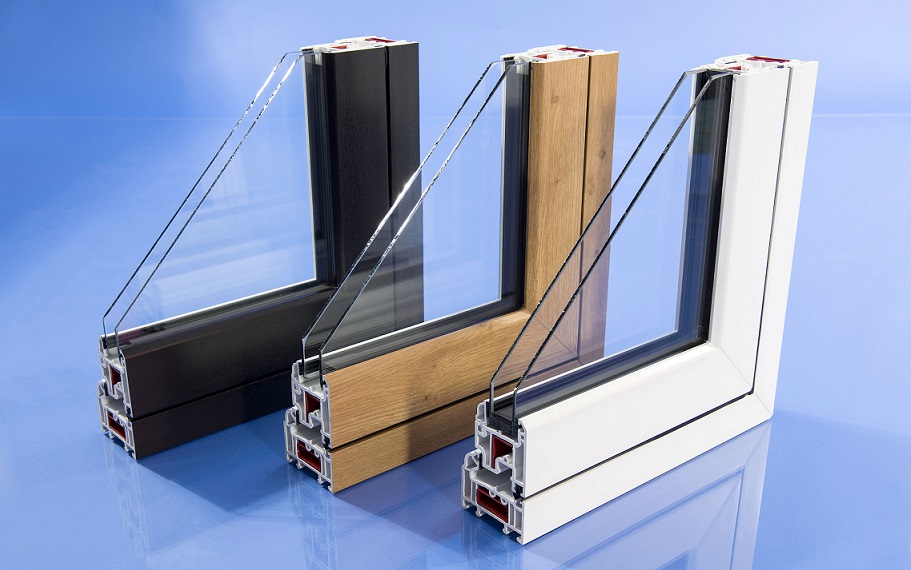Times they are a changing. These are just a few of my thoughts on where PVC in the fenestration industry will be in a decades time. I might be wrong, but these are just predictions based on what is going on right now.
New Look
PVCu profiles as we know will be starting to change – big time. If you look at what first came out around 30 years ago, most profiles were white or the very poor early versions of wood grain, and in great big chunky, blocky frames which frankly just did not do the product any justice.
However when you look at what is out there today in terms of timber alterantive products like Storm 2, Residence 9, Prestige by Aztec Windows as well as others, the range and look of PVC is changing. It is getting closer and closer to timber every year, and there are more and more niche fabricators popping up around the UK providing these timber looking PVC products. They all look a world away from the very early versions of PVC.
I think in ten years time we’ll be selling a lot more of the timber alternative styles of frames compared to standard versions. This is something all manufacturers should bear in mind. As all markets change and evolve, so should they so they don’t get caught out bu the pace of change.
Price Drop
Now I firmly expect the cost of PVC in general to go up in a decade. Oil will start running low at some point, with transport, production and all other costs associated going up too. But what I do expect is that the price of timber alternative PVC will either level out or start to drop.
As with any young technology, it always starts of fairly expensive compared to it’s older rivals. But with time, and as demand for the new stuff grows, economies of scale start to play a part and these prices should start to come down as volumes start to rise. How much they will go down is anyone’s guess. But if demand is strong and the consumer is behind the idea, then the difference between standard PVC and timber alternative might not be all that much.
However we don’t want it to stabilise too much. At the moment timber alternative is still and upsell from standard PVC. It can command a higher margin. We don’t often get a chance as an industry to get such a healthy margin these days, so lets keep it that way!
Higher Demand
Forcing that price drop as mentioned above will be demand. The force of change in the PVC industry will happen far quicker than is used to. Thanks to the internet and the double glazing industry’s improving marketing skills, we can promote new products such as the timber alternative option to a far wider audience than was once possible.
It also helps that most consumers are more savvy now when it comes to new windows and doors. They will go online to research what PVC options are out there to buy and what would look best for their property. In ten years I would expect the timber alternative market to be far bigger than what it is today, with more fabricators in the sector providing even more choice than we currently have.
No More Shiny White
I’m not saying that in ten years all shiny white plastic will have gone. This would be ridiculous given how established that market is. However what I am saying is that it’s share of the market will decrease in that time.
As demand for more wooden looking PVC rises, this will naturally replace some of the shiny white PVC business. In ten years, as the price gap between normal PVC systems and timber alternative closes, this again will squeeze whatever majority the standard PVC sector has.
To be honest, I think this would be a good thing. PVC has always had a bit of a bad wrap. evolving into something which looks and behaves completely different, completely more upmarket and sympathetic to most buildings, cannot be a bad thing. My own personal opinion of timber alternative is a high one. I love the product, we personally sell the Storm 2 windows by Evolution, but the Residence 9 product looks great too, as does the Prestige option by Aztec. These are all great PVC options which indicates how the overall PVC market is going to evolve over the coming years.
Remember guys this is just from a PVC point of view and doesn’t take into account how the timber and aluminium sectors will change over the next decade!
Agree or disagree? Am I overshooting the mark or will the pace of change actually be stronger than what I’ve said? All comments are welcome in the section below.





First I would like to say how informative your blog has been,I think it’s a really good way to reach out to the industry as well as the general public. Re your comments around the latest wood effect PVC products I couldn’t agree more. Certainly living in a Victorian cottage I had never given PVC a thought until I came across Residence 9. At last a low maintenance product that is a real alternative to wood. I think as more people see these products and the price improves then for all but the most high end or sensitive installations wood… Read more »
Thanks very much Toby
I’m not sure whether you’re from the industry or a consumer looking in at our little world, but I’m glad that you’ve found this site of some use to you! Thanks for your comment on here, it is much appreciated!
Kind regards
DGB